Mahmoud Abdelrahman
It's not you, it's me -- Global urban visual perception varies across demographics and personalities
May 19, 2025Abstract:Understanding people's preferences and needs is crucial for urban planning decisions, yet current approaches often combine them from multi-cultural and multi-city populations, obscuring important demographic differences and risking amplifying biases. We conducted a large-scale urban visual perception survey of streetscapes worldwide using street view imagery, examining how demographics -- including gender, age, income, education, race and ethnicity, and, for the first time, personality traits -- shape perceptions among 1,000 participants, with balanced demographics, from five countries and 45 nationalities. This dataset, introduced as Street Perception Evaluation Considering Socioeconomics (SPECS), exhibits statistically significant differences in perception scores in six traditionally used indicators (safe, lively, wealthy, beautiful, boring, and depressing) and four new ones we propose (live nearby, walk, cycle, green) among demographics and personalities. We revealed that location-based sentiments are carried over in people's preferences when comparing urban streetscapes with other cities. Further, we compared the perception scores based on where participants and streetscapes are from. We found that an off-the-shelf machine learning model trained on an existing global perception dataset tends to overestimate positive indicators and underestimate negative ones compared to human responses, suggesting that targeted intervention should consider locals' perception. Our study aspires to rectify the myopic treatment of street perception, which rarely considers demographics or personality traits.
ZenSVI: An Open-Source Software for the Integrated Acquisition, Processing and Analysis of Street View Imagery Towards Scalable Urban Science
Dec 24, 2024Abstract:Street view imagery (SVI) has been instrumental in many studies in the past decade to understand and characterize street features and the built environment. Researchers across a variety of domains, such as transportation, health, architecture, human perception, and infrastructure have employed different methods to analyze SVI. However, these applications and image-processing procedures have not been standardized, and solutions have been implemented in isolation, often making it difficult for others to reproduce existing work and carry out new research. Using SVI for research requires multiple technical steps: accessing APIs for scalable data collection, preprocessing images to standardize formats, implementing computer vision models for feature extraction, and conducting spatial analysis. These technical requirements create barriers for researchers in urban studies, particularly those without extensive programming experience. We develop ZenSVI, a free and open-source Python package that integrates and implements the entire process of SVI analysis, supporting a wide range of use cases. Its end-to-end pipeline includes downloading SVI from multiple platforms (e.g., Mapillary and KartaView) efficiently, analyzing metadata of SVI, applying computer vision models to extract target features, transforming SVI into different projections (e.g., fish-eye and perspective) and different formats (e.g., depth map and point cloud), visualizing analyses with maps and plots, and exporting outputs to other software tools. We demonstrate its use in Singapore through a case study of data quality assessment and clustering analysis in a streamlined manner. Our software improves the transparency, reproducibility, and scalability of research relying on SVI and supports researchers in conducting urban analyses efficiently. Its modular design facilitates extensions and unlocking new use cases.
Targeting occupant feedback using digital twins: Adaptive spatial-temporal thermal preference sampling to optimize personal comfort models
Apr 11, 2022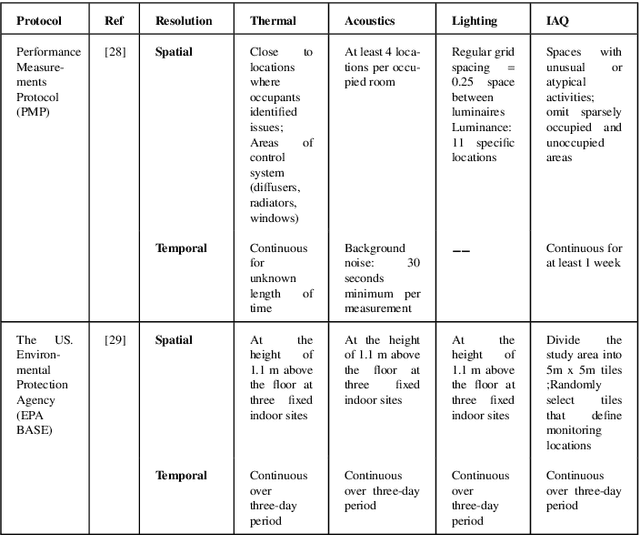

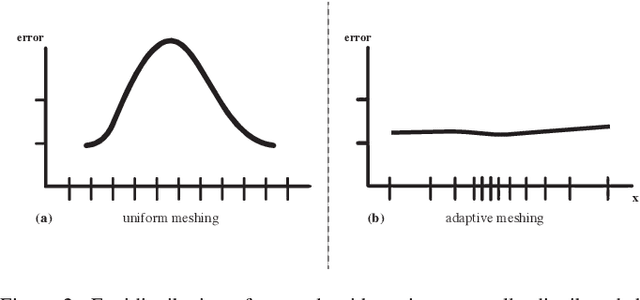

Abstract:Collecting intensive longitudinal thermal preference data from building occupants is emerging as an innovative means of characterizing the performance of buildings and the people who use them. These techniques have occupants giving subjective feedback using smartphones or smartwatches frequently over the course of days or weeks. The intention is that the data will be collected with high spatial and temporal diversity to best characterize a building and the occupant's preferences. But in reality, leaving the occupant to respond in an ad-hoc or fixed interval way creates unneeded survey fatigue and redundant data. This paper outlines a scenario-based (virtual experiment) method for optimizing data sampling using a smartwatch to achieve comparable accuracy in a personal thermal preference model with fewer data. This method uses BIM-extracted spatial data and Graph Neural Network-based (GNN) modeling to find regions of similar comfort preference to identify the best scenarios for triggering the occupant to give feedback. This method is compared to two baseline scenarios that use conventional zoning and a generic 4x4 square meter grid method from two field-based data sets. The results show that the proposed Build2Vec method has an 18-23\% higher overall sampling quality than the spaces-based and square-grid-based sampling methods. The Build2Vec method also performs similar to the baselines when removing redundant occupant feedback points but with better scalability potential.
Personal thermal comfort models using digital twins: Preference prediction with BIM-extracted spatial-temporal proximity data from Build2Vec
Oct 30, 2021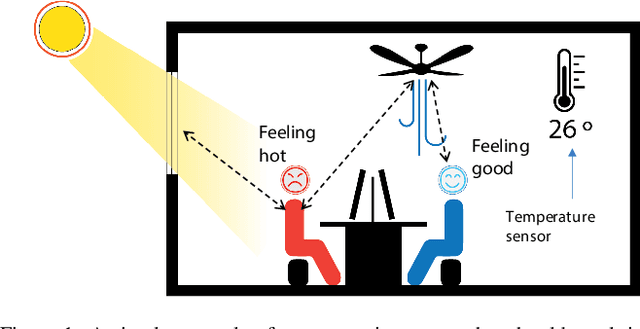
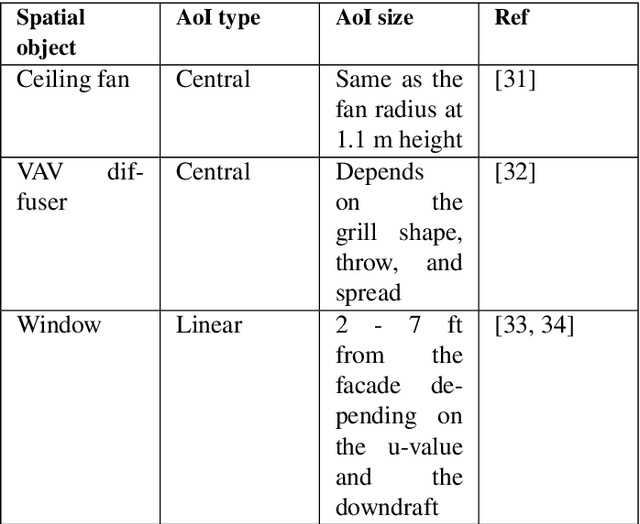
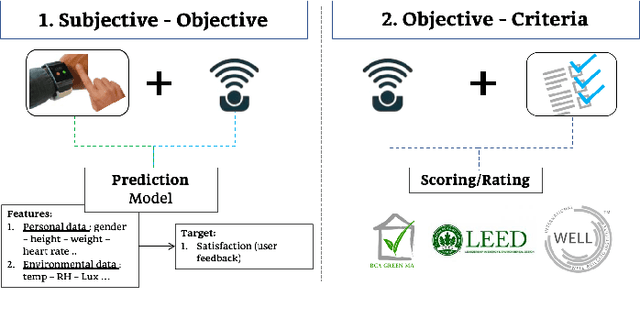
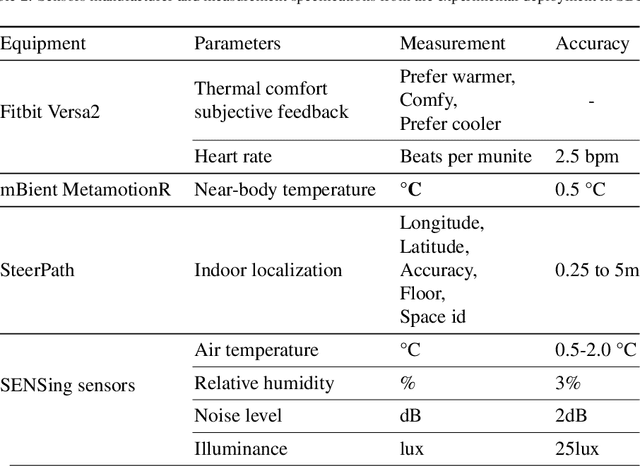
Abstract:Conventional thermal preference prediction in buildings has limitations due to the difficulty in capturing all environmental and personal factors. New model features can improve the ability of a machine learning model to classify a person's thermal preference. The spatial context of a building can provide information to models about the windows, walls, heating and cooling sources, air diffusers, and other factors that create micro-environments that influence thermal comfort. Due to spatial heterogeneity, it is impractical to position sensors at a high enough resolution to capture all conditions. This research aims to build upon an existing vector-based spatial model, called Build2Vec, for predicting spatial-temporal occupants' indoor environmental preferences. Build2Vec utilizes the spatial data from the Building Information Model (BIM) and indoor localization in a real-world setting. This framework uses longitudinal intensive thermal comfort subjective feedback from smart watch-based ecological momentary assessments (EMA). The aggregation of these data is combined into a graph network structure (i.e., objects and relations) and used as input for a classification model to predict occupant thermal preference. The results of a test implementation show 14-28% accuracy improvement over a set of baselines that use conventional thermal preference prediction input variables.
Build2Vec: Building Representation in Vector Space
Jul 01, 2020
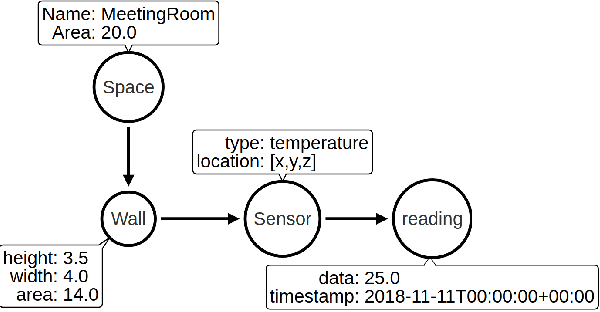


Abstract:In this paper, we represent a methodology of a graph embeddings algorithm that is used to transform labeled property graphs obtained from a Building Information Model (BIM). Industrial Foundation Classes (IFC) is a standard schema for BIM, which is utilized to convert the building data into a graph representation. We used node2Vec with biased random walks to extract semantic similarities between different building components and represent them in a multi-dimensional vector space. A case study implementation is conducted on a net-zero-energy building located at the National University of Singapore (SDE4). This approach shows promising machine learning applications in capturing the semantic relations and similarities of different building objects, more specifically, spatial and spatio-temporal data.
 Add to Chrome
Add to Chrome Add to Firefox
Add to Firefox Add to Edge
Add to Edge